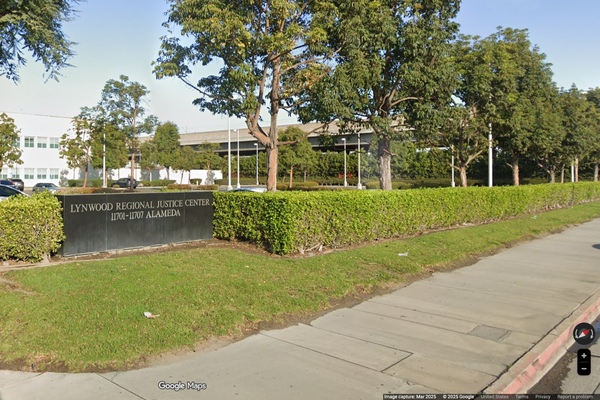
Let me share something that’s going to make a lot of people uncomfortable. After diving deep into 40 years of market data across every major developed market, plus China for good measure, I’ve got some news that’s going to ruin the party for anyone expecting double-digit returns over the next decade.
I know, I know, AI will change everything and this years-long bull market is only the beginning. I’ve heard it all too.
But here’s the thing. The research is clear: starting valuations predict future returns with scary accuracy. And right now? Well, let’s just say we’re not exactly shopping at a discount store.
Now, I’m not saying this market is about to crash. Timing the market is a fool’s business – it can stay expensive for years and years.
What I’m saying is that you need to have realistic expectations about any money you invest in the broader market right now.
How to Position for the Next Big Move in Silver and Gold
Most traders get caught chasing metals after the breakout. Matt Maley prepares in advance. On Wednesday at 6 PM ET, he'll show you the signals, levels, and trade structures he uses to capture volatility in real time. Don't react late—trade the breakout as it happens. Join the Free Session
Numbers Don’t Lie (Even When We Want Them To)
I spent weeks digging through mountains of data, looking at P/E ratios by deciles – basically sorting markets into ten buckets from cheapest to most expensive – and then tracking what happened over the next five and ten years. What I found was so consistent it almost felt like cheating.
Take the U.S. market data going back to 1926. When you bought stocks in the cheapest 10% of markets (those times when everyone was convinced the world was ending), you made 10.3% annually in real terms over the next decade.
Not bad, right?
But here’s the kicker: when you bought during the most expensive 10% of markets, you know, those times when everyone was convinced we’d entered a “new paradigm,” you made a whopping 0.5% annually. Half a percent. That’s basically inflation money.
The middle deciles tell the same story. Every step up in starting valuation corresponded to lower future returns, like clockwork. For every five-point increase in the Shiller P/E ratio, you could expect to lose about three percentage points of annual returns over the next decade.
Think about that for a minute. We’re talking about the difference between retiring comfortably and eating ramen noodles in your golden years, all determined by what you paid going in.
It’s Not Just An American Thing
Before you start thinking this is some quirky U.S. market phenomenon, let me burst that bubble too. I looked at 17 developed markets from 1979 to 2015, and the story was depressingly similar everywhere. Europe, Japan, Australia, Canada…
It didn’t matter. High starting valuations led to lousy future returns with the reliability of a Swiss watch. The correlation was around 0.7, which, in statistical terms, means “yeah, this relationship is real.”
Right now, European markets appear more reasonable than those in the U.S. The STOXX Europe 600 is trading at a trailing P/E of about 17, while we’re sitting here in America paying bubble-level prices. The UK’s CAPE ratio is actually below its long-term average. When was the last time you could say that about any major market?
Australia looks expensive at 19 times earnings, sitting way above normal levels. Canada’s not cheap either. But compared to what we’re paying in the U.S.? They both look like bargains.
The China Puzzle
China was the wild card in all this research. The traditional P/E relationship gets weird there due to the volatility of Chinese earnings. All that growth comes with massive swings in profitability that mess with the usual valuation metrics.
Here’s the really sobering part: Chinese A-shares delivered essentially zero real returns from 2000 to 2018. Zero. Despite China becoming an economic superpower during that period. That’s what happens when you pay too much going in, even for a great growth story.
The silver lining? Chinese markets look reasonably priced now, with Shanghai trading around 14 times earnings and Hong Kong H-shares at about 10 times.
Of course, you’ve got to deal with all the other China risks, but from a pure valuation standpoint, they’re not crazy expensive.
Why This Matters More Than You Think
Look, I get it. Nobody wants to hear that their retirement portfolio is probably going to underperform for the next decade. But here’s the thing. Understanding this relationship gives you a massive advantage.
When everyone else is extrapolating recent returns into the future (like they always do), you can actually set realistic expectations.
When financial advisors are promising 8-10% annual returns based on “historical averages,” you can call BS and plan accordingly.
The methodology matters too. Basic trailing P/E ratios are effective, but the Cyclically Adjusted P/E (CAPE) ratios, which smooth out earnings over ten years, work even better. They strip out the noise from business cycles, giving you a cleaner read on whether you’re overpaying.
The Uncomfortable Truth About Today
Here’s where things get really uncomfortable. The U.S. market’s Shiller P/E ratio is currently around 37-40. That puts us in the 90th+ percentile of all historical observations. The only times we’ve been higher? 1929, 2000, and briefly in 2007.
You know how those stories ended.
Now, I’m not saying we’re about to crash tomorrow. Markets can stay expensive for years – sometimes a full decade or more. But if history is any guide, and it usually is, we’re looking at returns in the 0-2% range annually in real terms for the next ten years.
That’s not a crash. That’s just…nothing. A decade of going sideways while inflation eats away at your purchasing power.
European markets look more attractive from here. Asian markets outside of China are mixed but generally less expensive than the U.S. Even some emerging markets are starting to look interesting from a valuation perspective.
I’m not telling you to panic-sell everything and move to cash. Market timing doesn’t work for most people, and you can be right about valuations but wrong about timing for years.
This is where credit spreads and trends come into play, but that's a discussion for another day.
I am telling you this is probably a bad time to commit large chunks of money to index funds and other passive strategies as a long-term investment.
The Bottom Line
Forty years of data across dozens of markets all point to the same conclusion: what you pay matters. A lot. More than most people want to believe.
Starting valuations explain roughly half of your future returns over the next decade. That’s not a slight edge – that’s a massive structural advantage if you’re willing to pay attention.
Right now, that advantage is telling us to be humble. To expect less. To plan accordingly.
I know it’s not what anyone wants to hear in the middle of what feels like a raging bull market. But the numbers don’t care about our feelings. They never have.
The good news? Understanding this puts you ahead of 95% of investors who are still betting on the good times rolling forever. In this business, being realistic when everyone else is being optimistic is usually a pretty good place to be.
Stay sharp out there.
Editorial content from our expert contributors is intended to be information for the general public and not individualized investment advice. Editors/contributors are presenting their individual opinions and strategies, which are neither expressly nor impliedly approved or endorsed by Benzinga.
Photo: Shutterstock







